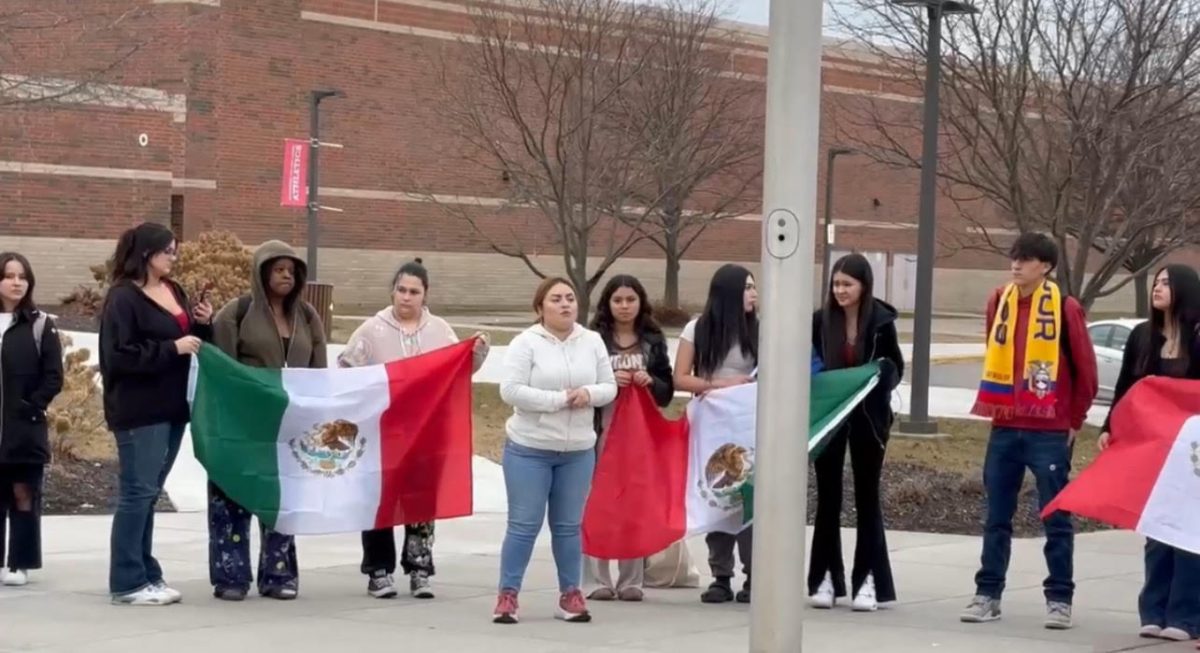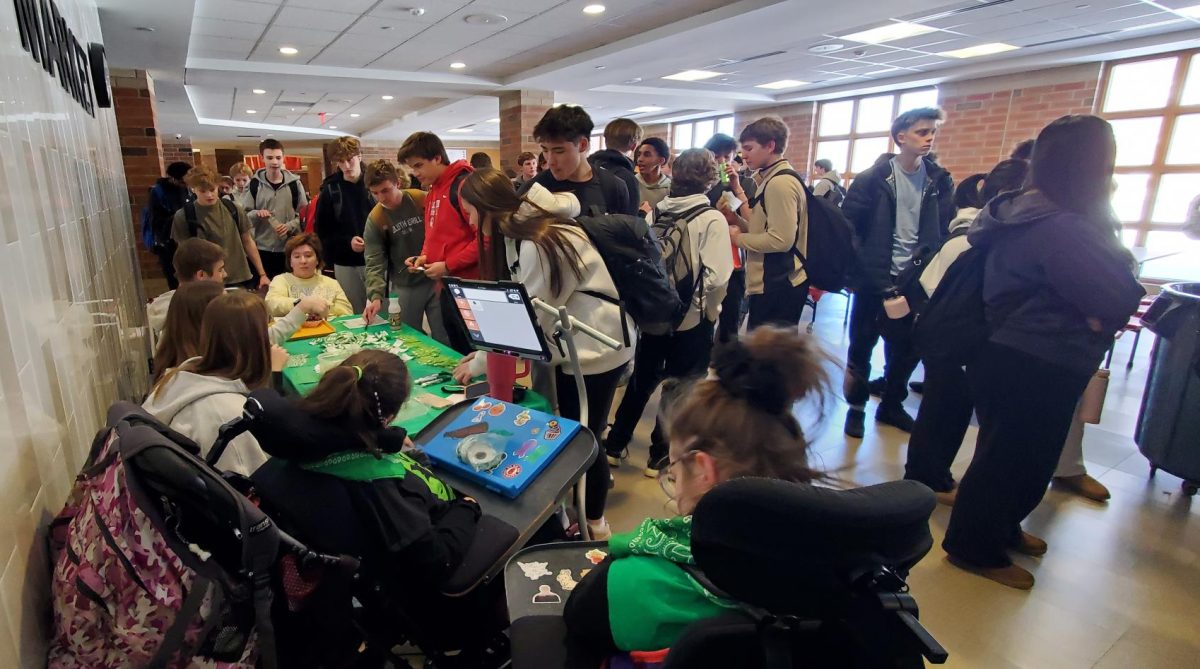On Feb. 14 students organized a walkout to vocalize their concerns regarding recent cultural-related incidents within the school community. Around 100 students participated and gathered around the flag pole to discuss possible solutions students think the administration should enforce.
Concerns have risen as recent events involving racial tension in the school took on a threatening nature. The walkout provided a safe space for students to draw attention to microaggression issues and encourage the school administration to make a change.
“There was no violence. There was no yelling, there was no chanting. And I think that honestly, worked out good because we listened to it in a different manner. And I think that that it was a safer environment for students to be able to hear each other and speak with each other,” junior Emily Carrillo Arzapalo stated.
Throughout the walkout, students have suggested some changes they would like to see to ensure their safety and the safety of the school. There is currently a group called the BIPOC student union. The BIPOC union stands as a united group of members from other organizations such as ASU, BSU, and LSU. This newly formed group along with the student leadership council are currently working together to gather more student data and suggest impactful changes.
“Recently the student council presidents created a mega council and the mega council includes Student Council and all the members of the affinity groups. You have the leaders of MSA sisterhood, NASA, and BSU all in this room where they can bring up things collectively and address these issues. Administrators have been in those meetings as well because we have to partner with our administration in order to move things forward,” Cultural liaison Cornelius Rish said.
Students voiced that there are growing concerns about the current student disciplinary system being too relaxed when it comes to racial discrimination. Students and parents said they would like to see a system that includes more expulsions and harsher suspensions for those involved. Instead of suspending both students in a dispute, students would like to gather more information on how the conflict began and see how it played out in detail. Students are also asking for the Ethnic and Cultural Studies class to be a graduation requirement. Ethnic and Cultural Studies dive deep into the history of different cultures and heritages. If students are more educated on issues involving race, there could be an overall decline in hateful actions stemming from racial injustice.
When asked if she had ever experienced a hateful comment senior Esmeralda Palma Andrade said she was told, “I should go back to where they came from,” and the, “different features of my face were ugly.”
Students also made it a point to address incidents of microaggression they grew up with starting as far back as elementary school. They explained at such a young age, students’ minds are developing at a fast rate where they take in information and learn from all their surroundings. Students stated if they said something they didn’t know was harmful, there was no one to tell them right from wrong, and that It is more challenging to change those behaviors at an older age. Furthermore, parents and relatives can especially have the biggest impact on their child’s morals. If there are hateful beliefs and actions by parents it is very likely to be passed down to the child.
Arzapalo also added that a lot of anger is rooted in being misinformed and having a lack of education.
At the heart of every school is the student body. After all, the students are the ones who must deal with harassment from other students. There are three major councils delegated to serve the students and propose official changes on a district level, student council, student leadership council, and BIPOC student union. These groups can gather student information and compile it into usable data to present to the school board or administration. In between the horrific events that have been unfolding over the past month, there has also been a brewing force of unity. More students than ever are working together to help be the change that can move the district forward.
“I’m glad that students are using their voice and giving their perspective of how we can make things better. The walkout was just a starting point. That hopefully we can build from,” Rish said.
The walk-out serves as a reminder that cultural issues cannot be overlooked within educational environments. The administration must take action to create a more inclusive environment backed by cultural awareness. Harsher actions must be taken, like enforcing more discipline on students who verbally or physically attack other classmates based on their culture. Also, requiring Ethnic and Cultural Studies to be a required course for better understanding would be a great place for the administration to start. The student’s words need to transform into meaningful changes before they and the community lose hope for a safer and better-educated future. If there is ever a situation in which a student believes someone is acting in a way that seems unsafe, contact See Something Say Something.








